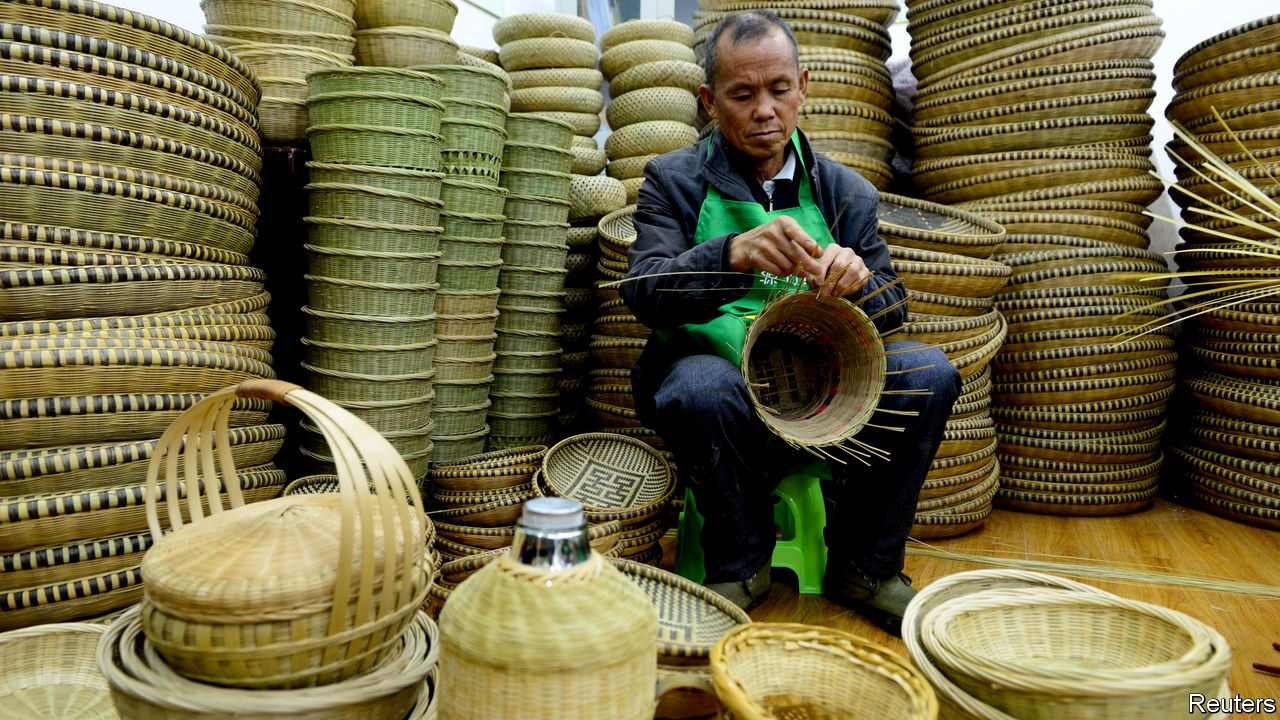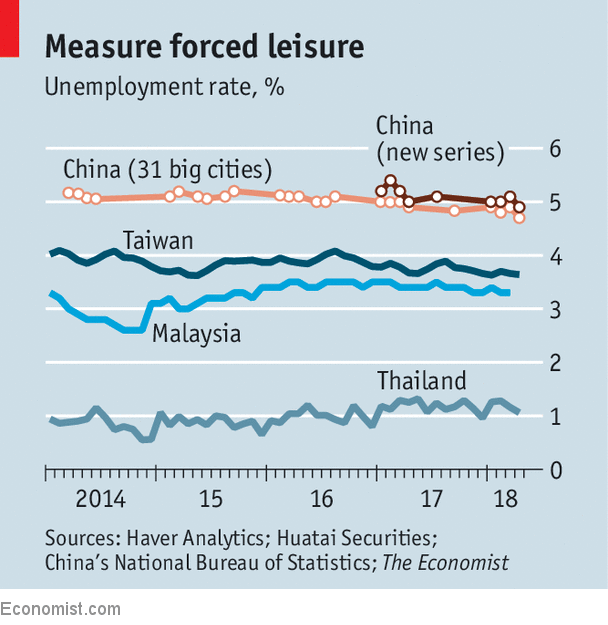
AMERICA’S unemployment statistics attract close attention, even from presidents. Early on June 1st President Donald Trump tweeted that he was looking forward to the latest figure (3.8%), released that morning. China’s unemployment numbers, by contrast, attract mostly ridicule. They have barely budged since 2011 despite the upheavals of the period.
Many China-watchers therefore hoped that a new measure of unemployment, dating from 2016 but published monthly since April, would be more revealing. Unlike the older statistic, which counts only those registered as jobless at local labour offices, the new measure draws on a survey of the labour force, collected by trained enumerators and beamed directly to Beijing beyond the grasp of local officials. It now covers 120,000 households across urban China (on top of a longer-running survey of 31 cities), providing, in theory, a representative snapshot of the biggest unemployed population in the world.
To no one’s surprise, the new number is well below the government’s target of 5.5%. And unlike America’s figure, it also seems boringly stable (see chart). That has led many to dismiss it as propaganda. But such a judgment may be too hasty. If China’s unemployment figures do not behave like America’s, that may be because Asian unemployment bears little resemblance to its Western counterpart.
In many developing countries, unemployment is low simply because few people can afford it. Jobless benefits are patchy. In their absence, most people have to eke out a living to survive. Unemployment is, in effect, a “luxury good”, notes Ajit Ghose of India’s Institute for Human Development, a research organisation.

Even when they are available, benefits may not be worth the bother. In Thailand, for example, payments last six months and range from 1,650 baht per month ($52) to 15,000. To be eligible, a Thai worker must register with the social-security office. But only one in three does so, according to Warn Lekfuangfu, an economist at Chulalongkorn University. Many remain outside the formal economy, where they are denied benefits but also spared taxes.
What do they do instead? A laid-off factory worker might lend a hand on the family farm, become a casual day labourer, or sell trinkets on the street. “There’s a plethora of low-wage jobs” in the region, points out Sara Elder of the International Labour Organisation (ILO) in Bangkok. At her husband’s gym, ten people wait to help him with the climbing wall. In France, he would have to get by with only one.
When Annan Chanthan left his job as a graphic designer in Bangkok five years ago, he thought about collecting unemployment benefits, but never bothered. He now earns more money selling lottery tickets next to Hua Lamphong railway station than he did in his former profession.
In poor countries, unemployment is paradoxically concentrated among the better off and better educated. They can afford to wait a bit for a job that matches their aspirations and qualifications. Their behaviour may also explain unemployment’s curious stability. “Even relatively well-off people cannot wait indefinitely,” Mr Ghose points out. Thus when times are bad, they may settle for a worse job or stop looking, rather than wait longer, which would add to the rate of unemployment.
Fulsome employment
The peculiarities of unemployment figures are not always appreciated by the governments that publish them. Some policymakers even complain that the statistic is too low. “They hate the unemployment rate in Africa; they’re very vocal about it,” Ms Elder says. For many years, Liberia’s jobless rate was said to be 85%, an outlandish figure that nonetheless symbolised the country’s genuine economic distress. When the government carried out a proper count in 2010, it discovered that the true rate, strictly defined, was under 3%.
Some governments nudge the measure upwards. They count people who are not immediately available to start work or not actively seeking it. Indonesia, for example, includes “discouraged workers”, who have given up looking for a job. Its national number was 5.4% in 2017, compared with the ILO estimate of 4.2%.
Countries seeking higher rates may soon get their wish. In 2013 the world’s labour statisticians resolved to change the definition of the labour force, excluding people, such as subsistence farmers, who produce goods for their own family’s use. That does not change the number of unemployed. But it does shrink the labour force. Thus when the new definition is implemented, an unchanged number of unemployed people will constitute a higher percentage of a smaller labour force. In a rural country like Laos, the effect is dramatic. Its unemployment rate was 0.7% in 2010 using the old definition but jumped to 9.6% in 2017, using the new, stricter one.
Ultimately, a low unemployment rate is evidence only that people are working, not that they are working well. Work may be poorly paid, periodic and precarious. In Indonesia, less than half of those in employment collect a recognisable wage or salary. The rest mostly work for themselves or their families.
Patchy employment is by no means the preserve of poor countries. It is becoming more prominent in richer nations also, notes Mr Ghose. On his last visit to Cambridge University, he learnt that some staff in the faculty cafeteria did not find out until Friday whether they would be working the following week. When he was a student at Cambridge decades ago, things were not like that at all, he says. In Britain and America, the unemployment rate is now reminiscent of that past age of full employment. But as Asia demonstrates, full employment can sometimes be surprisingly threadbare.
No comments:
Post a Comment
Note: Only a member of this blog may post a comment.